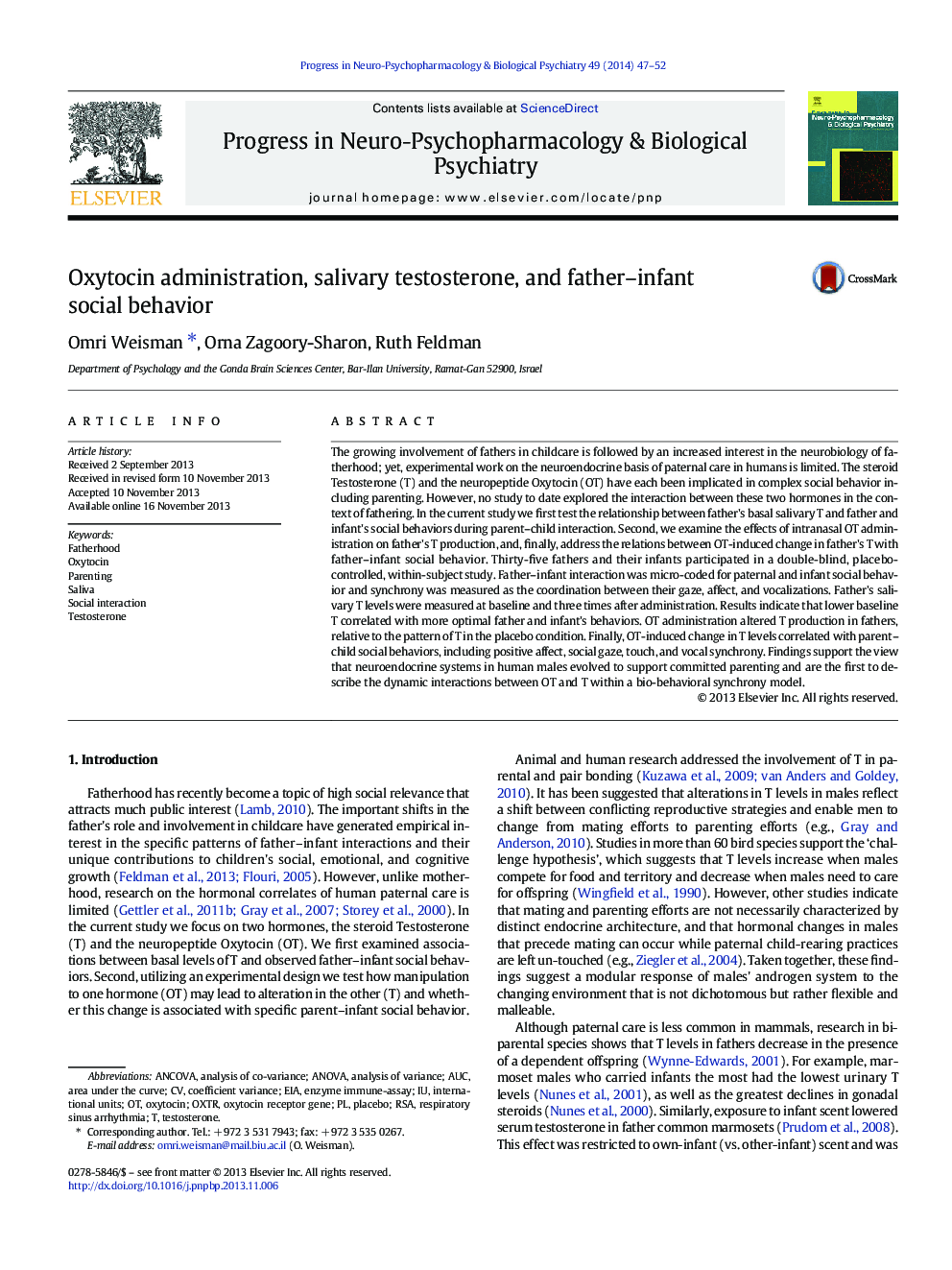| Article ID | Journal | Published Year | Pages | File Type |
|---|---|---|---|---|
| 2564871 | Progress in Neuro-Psychopharmacology and Biological Psychiatry | 2014 | 6 Pages |
•Basal testosterone is inversely correlated with human father-infant social exchange.•Oxytocin alters testosterone concentration in fathers, relative to placebo.•Oxytocin-induced change in fathers' testosterone is associated with parent-infant social behaviors.
The growing involvement of fathers in childcare is followed by an increased interest in the neurobiology of fatherhood; yet, experimental work on the neuroendocrine basis of paternal care in humans is limited. The steroid Testosterone (T) and the neuropeptide Oxytocin (OT) have each been implicated in complex social behavior including parenting. However, no study to date explored the interaction between these two hormones in the context of fathering. In the current study we first test the relationship between father's basal salivary T and father and infant's social behaviors during parent–child interaction. Second, we examine the effects of intranasal OT administration on father's T production, and, finally, address the relations between OT-induced change in father's T with father–infant social behavior. Thirty-five fathers and their infants participated in a double-blind, placebo-controlled, within-subject study. Father–infant interaction was micro-coded for paternal and infant social behavior and synchrony was measured as the coordination between their gaze, affect, and vocalizations. Father's salivary T levels were measured at baseline and three times after administration. Results indicate that lower baseline T correlated with more optimal father and infant's behaviors. OT administration altered T production in fathers, relative to the pattern of T in the placebo condition. Finally, OT-induced change in T levels correlated with parent–child social behaviors, including positive affect, social gaze, touch, and vocal synchrony. Findings support the view that neuroendocrine systems in human males evolved to support committed parenting and are the first to describe the dynamic interactions between OT and T within a bio-behavioral synchrony model.
